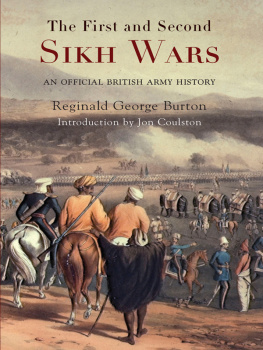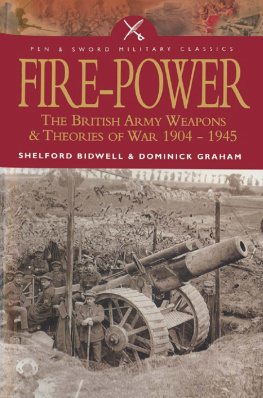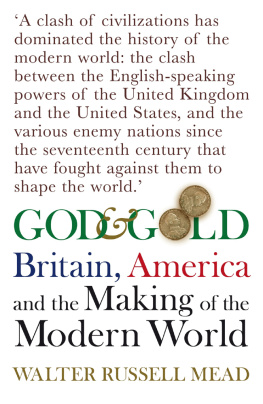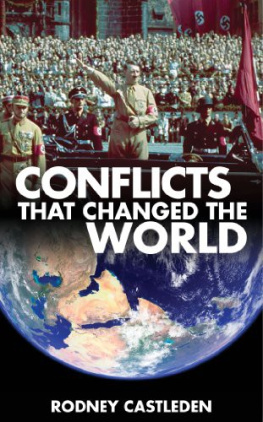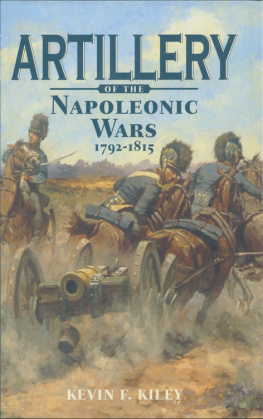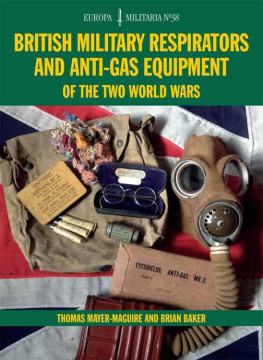John B. Carpenter - British Artillery Between World Wars (Extended Edition): The best technologies of world wars
Here you can read online John B. Carpenter - British Artillery Between World Wars (Extended Edition): The best technologies of world wars full text of the book (entire story) in english for free. Download pdf and epub, get meaning, cover and reviews about this ebook. year: 2020, genre: Non-fiction. Description of the work, (preface) as well as reviews are available. Best literature library LitArk.com created for fans of good reading and offers a wide selection of genres:
Romance novel
Science fiction
Adventure
Detective
Science
History
Home and family
Prose
Art
Politics
Computer
Non-fiction
Religion
Business
Children
Humor
Choose a favorite category and find really read worthwhile books. Enjoy immersion in the world of imagination, feel the emotions of the characters or learn something new for yourself, make an fascinating discovery.

- Book:British Artillery Between World Wars (Extended Edition): The best technologies of world wars
- Author:
- Genre:
- Year:2020
- Rating:5 / 5
- Favourites:Add to favourites
- Your mark:
- 100
- 1
- 2
- 3
- 4
- 5
British Artillery Between World Wars (Extended Edition): The best technologies of world wars: summary, description and annotation
We offer to read an annotation, description, summary or preface (depends on what the author of the book "British Artillery Between World Wars (Extended Edition): The best technologies of world wars" wrote himself). If you haven't found the necessary information about the book — write in the comments, we will try to find it.
John B. Carpenter: author's other books
Who wrote British Artillery Between World Wars (Extended Edition): The best technologies of world wars? Find out the surname, the name of the author of the book and a list of all author's works by series.
British Artillery Between World Wars (Extended Edition): The best technologies of world wars — read online for free the complete book (whole text) full work
Below is the text of the book, divided by pages. System saving the place of the last page read, allows you to conveniently read the book "British Artillery Between World Wars (Extended Edition): The best technologies of world wars" online for free, without having to search again every time where you left off. Put a bookmark, and you can go to the page where you finished reading at any time.
Font size:
Interval:
Bookmark:
British Artillery Between World Wars
(Extended Edition)
The best technologies of world wars
John B. Carpenter
All rights reserved
John Carpenter , 2017
Camea Publish, 2018
Cover design by Dennis Westingen
Fotos by:
Gina Smith
Tanya Dolski
Sam Sanderson
Bill Carson
This is an expanded edition. In it you will learn about the special artillery pieces that were used in Great Britain between the First and Second World Wars.
This book is devoted to the towed artillery of Great Britain, which took part in the First and Second World Wars. Also here we will consider the model of anti-tank rifle and anti-tank grenades.
Artillery is a kind of army, the main weaponry of which are artillery pieces - firearms of at least 20 mm caliber designed to engage the enemy on land, sea and air. The same concept is understood and the whole set of artillery armament (guns, ammunition, firearms, etc.).
Content:
Introduction
Great Britain, while modernizing old tools, practically did not create new models. The main attention in the pre-war period was directed to the development of the average caliber of howitzers of sufficiently high tactical and technical characteristics. Industry could not master the production of medium-caliber air guns (30-45 mm), as a result of which, aviation was overloaded with numerous large-caliber machine guns and 20-mm cannons, which, especially in the second half of the war, were ineffective. The basis of the British naval guns was medium-caliber weapons, built in the pre-war years and the second half of the war. Virtually all large-caliber weapons were built before the First World War or in its period, some of them were modernized in the interwar period.
Britain was almost the only maritime state that did not have heavy and coastal guns of large caliber. This task was solved by a mass of medium-caliber guns and ships. At the same time, the number of small-caliber coastal guns (up to 100 mm) was extremely large, which was due to the fear of the British in front of the mosquito fleet of Germany. To enhance coastal defense, large-caliber railway tools were used, usually decommissioned from ships.
The anti-aircraft artillery of Great Britain, despite its relative modernity, proved to be qualitatively and quantitatively not ready to repel the massive air raids of Germany. This problem was not solved even by the end of the war, even taking into account the US supplies under the Lend-Lease. The effectiveness of anti-aircraft, ship and coastal artillery significantly increased in the second half of the war through the use of radar and fire control systems.
Britain and the British Commonwealth countries were one of the leaders in the issue of mortars. At the same time, light mortars that were directly in the infantry units occupied more than half of the entire output. At the same time, the number of field and infantry guns that were in service with the army was too small. At the same time, most of the guns were modernized artillery of the First World War. The number of anti-tank guns produced by Great Britain ranks third in the world, but two-thirds of them was small-caliber. The country had no specialized tools for fighting heavy tanks.
British self-propelled artillery was not numerous and represented, in the main mass, anti-tank guns and howitzers installed on the basis of obsolete tanks. Anti-aircraft self-propelled systems were often based on the chassis of trucks, less often - light tanks. The missile weapons of Great Britain were in the initial stage of development. In series production, there were rocket launcher systems, which served as auxiliary weapons.
Artillery at the beginning of the 20th century
Since the middle of the second millennium the artillery has become an indispensable participant in all major battles on land and at sea. However, the highest development it received in the XX century, when artillery guns were equipped with advanced gun carriages, rifled barrels, anti-roll devices, optical and mechanical sighting devices, automatic and semi-automatic gates. There were new ammunition, including unitary shots for field cannons and separate loading shots for howitzers and mortars. All these technical innovations made it possible to significantly increase the accuracy and range of firing of guns, as well as their rate of fire.
At the beginning of the XX century artillery guns were classified into three main types.
The guns were designed to defeat targets in open terrain, and also to fire at a greater range. They had long trunks, providing a high initial speed to the projectile and its flat, flat, trajectory. As for the range of fire, and for the impact of projectiles, the guns were superior to all other types of guns. But at an equal caliber they were heavier, since a significant force of recoil required strong and massive gun carriages.
Howitzers had to destroy various defensive structures and destroy the targets behind the fortification. As a consequence, the trajectory of the flight of the howitzer shells is steep, hinged. The trunk of these guns is short, ammunition is separate. The value of the powder charge could vary to achieve a different steepness of the trajectory of the projectile and change the range of fire at a constant angle of elevation of the barrel. At an equal caliber the howitzer is 2-3 times lighter than cannon, but it is always inferior to the latter in the rate of fire, because of a longer separate loading.
Mortire is an artillery gun of a large caliber with a thick-walled short barrel and extremely developed howitzer properties. The task of mortars was the destruction of particularly strong defensive fortifications. The shooting of them was conducted only by concrete and high-explosive shells at the elevation angles of the trunk from 50 to 75 . The career of mortars ended during the Second World War, and now they are no longer used.
During the Second World War, self-propelled guns, rocket launchers and mortars were widely used.
Self-propelled guns on wheeled and caterpillar chassis, in comparison with towed guns and howitzers, have better mobility and maneuverability, and besides, have a reservation protecting the crew from bullets and splinters.
Reactive systems of salvo fire are a package of tubular, rail or frame guides, from which rockets with solid propellant engines are launched. These installations are mounted on the chassis of various vehicles, tanks and armored personnel carriers. Mortars are smooth-bore guns, firing mostly non-rotating firing shells-mines. From conventional rifled cannons and howitzers they are distinguished by low weight, simplicity of the device and a steep hinged trajectory of the projectile's flight. Range of mortar fire is small, and they do not have any anti-roll devices - the energy of recoil is absorbed by the support plate during the shot.
In the postwar period, armies in mass numbers received recoilless weapons designed to combat armored vehicles. They also do not have wheel chocks. Their barrel remains stationary due to the partial escape of powder gases through nozzles in the breech section in the direction opposite to the direction of movement of the projectile.
The design of the artillery gun
A conventional cannon or howitzer usually consists of the following main parts.
The trunk is the main part of the artillery gun. It gives the projectile a certain initial speed and the right direction. In the trunk channel there is a smooth camora and a cut section. In the chamber there is a powder charge in the sleeve or cap and the rear of the projectile. The projectile is charged from the breech section of the trunk, equipped with a wedge or piston lock. For attaching the barrel there is a special lathe.
The carriage consists of a cradle, wheel chocks, sighting devices, a top machine with guidance mechanisms and shield cover, a lower lathe with sliding frames and a running gear.
Next pageFont size:
Interval:
Bookmark:
Similar books «British Artillery Between World Wars (Extended Edition): The best technologies of world wars»
Look at similar books to British Artillery Between World Wars (Extended Edition): The best technologies of world wars. We have selected literature similar in name and meaning in the hope of providing readers with more options to find new, interesting, not yet read works.
Discussion, reviews of the book British Artillery Between World Wars (Extended Edition): The best technologies of world wars and just readers' own opinions. Leave your comments, write what you think about the work, its meaning or the main characters. Specify what exactly you liked and what you didn't like, and why you think so.

